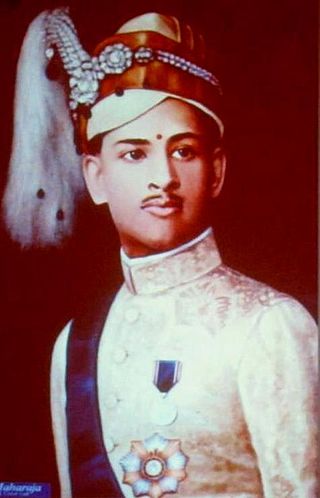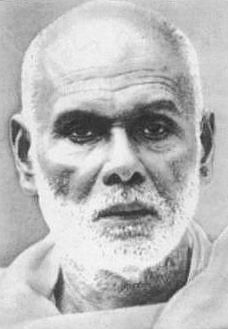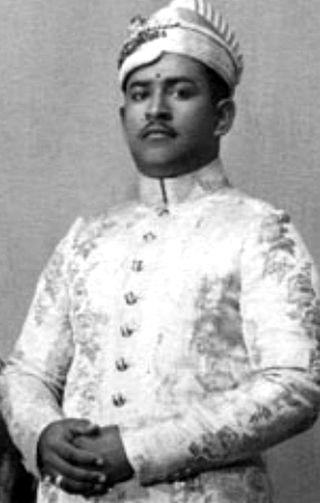
Kottayam is one of 14 districts in the Indian state of Kerala. Kottayam district comprises six municipal towns: Kottayam, Changanassery, Pala, Erattupetta, Ettumanoor, and Vaikom. It is the only district in Kerala that does not border the Arabian Sea or any other Indian state.

The Kingdom of Travancore, also known as the Kingdom of Thiruvithamkoor or later as Travancore State, was an Indian kingdom that lasted from c. 1729 until 1949. It was ruled by the Travancore Royal Family from Padmanabhapuram, and later Thiruvananthapuram. At its zenith, the kingdom covered most of the south of modern-day Kerala and the southernmost part of modern-day Tamil Nadu with the Thachudaya Kaimal's enclave of Irinjalakuda Koodalmanikyam temple in the neighbouring Kingdom of Cochin. However Tangasseri area of Kollam city and Anchuthengu near Attingal in Thiruvananthapuram were parts of British India.
Swathi Thirunal Rama Varma was the Maharaja of the Kingdom of Travancore. He is also considered as a brilliant music composer and is credited with over 400 classical compositions in both Carnatic and Hindustani style.

Sree Padmanabhadasa Sree Chithira Thirunal Balarama Varma, popularly known as Sree Chithira Thirunal, was the last ruling Maharaja of the Indian princely state of Travancore, in southern India until 1949 and later the Titular Maharajah of Travancore until 1991. His reign is known for several notable reforms that have indelible impact on the society and culture of Kerala.

Vaikom, IPA:[ʋɐjkːɐm], is a municipal town and a capital town of Vaikom Taluk, situated in the northwest of Kottayam district in the state of Kerala, India. The town is also noted for its role in the Indian independence movement for being the venue of Vaikom Satyagraham, a civil rights movement aimed at securing freedom of movement for all sections of society through the public roads leading to the Vaikom Shiva Temple.

Mannathu Padmanabhan was an Indian social reformer and freedom fighter from the south-western state of Kerala. He is recognised as the founder of the Nair Service Society (NSS), which represents the Nair community that constitutes 15.5% of the population of the state. His birthday(January 2) is observed as Mannam Jayanti every year. Padmanabhan is considered as a visionary reformer who organised the Nair community under the NSS.
The term Kerala was first epigraphically recorded as Cheras (Keralaputra) in a 3rd-century BCE rock inscription by the Mauryan emperor Ashoka of Magadha. It was mentioned as one of four independent kingdoms in southern India during Ashoka's time, the others being the Cholas, Pandyas and Satyaputras. The Cheras transformed Kerala into an international trade centre by establishing trade relations across the Arabian Sea with all major Mediterranean and Red Sea ports as well those of Eastern Africa and the Far East. The dominion of Cheras was located in one of the key routes of the ancient Indian Ocean trade. The early Cheras collapsed after repeated attacks from the neighboring Cholas and Rashtrakutas.

Kottayam is a city in the Indian state of Kerala, flanked by the Western Ghats on the east and the Vembanad Lake and paddy fields of Kuttanad on the west. It is the district headquarters of Kottayam district, located in south-west Kerala. Kottayam is located in the basin of the Meenachil River at an average elevation of 3 metres (9.8 ft) above sea level. It has a moderate climate. It is located approximately 155 kilometres (96 mi) north of the state capital Thiruvananthapuram.
The history of Thiruvananthapuram dates back to the 18th century AD. In 1795, the city became the capital of the princely state of Travancore. Several historic landmarks of the city, including the Kowdiar Palace, University of Kerala, and Napier Museum were built during that period. After independence, Thiruvananthapuram was made the capital of the state of Kerala.

Pooradam Thirunal Sethu Lakshmi Bayi CI was the monarch, though designated as the Regent due to British policy, of the Kingdom of Travancore in southern India between 1924 and 1931. She, along with her younger cousin, Moolam Thirunal Sethu Parvathi Bayi, were adopted into the Travancore royal family and were the granddaughters of the celebrated painter, Raja Ravi Varma.

Guruvayur Satyagraha took place in 1931–32 and was a Satyagraha in the present-day Thrissur district, which was then part of Ponnani Taluk of Malabar district, now part of Kerala, India. It was an effort to allow entry for Marginalised communities into the Guruvayur Temple.

The Ezhavas are a community with origins in the region of India presently known as Kerala, where in the 2010s they constituted about 23% of the population and were reported to be the largest Hindu community. The Malabar Ezhava group have claimed a higher ranking in the Hindu caste system than do the others, although from the perspective of the colonial and subsequent administrations they were treated as being of similar rank.

T. K. Madhavan Alias Deshabhimani Madhavan, was an Indian social reformer, journalist and revolutionary, who was involved with the Sree Narayana Dharma Paripalana Yogam. He hailed from Kerala and led the struggle against Social discrimination which was known as Vaikom Satyagraha.

Sree Padmanabhadasa Sree Uthradom Thirunal Marthanda Varma was the titular Maharaja of Travancore. He was the younger brother of the last ruling monarch of the Kingdom of Travancore, Maharajah Chithira Thirunal Balarama Varma.

The Travancore royal family was the ruling house of the Kingdom of Travancore.The Travancore royal family signed a treaty with the British in 1788, thereby adopting British dominance. Later, in 1805, they revised the treaty, leading to a diminution of royal authority and the loss of political independence for Travancore. They had to give up their ruling rights over the common people in 1949 when Travancore were forced to merge with Independent India and their political pension privileges were abolished in 1971.

Vaikom Satyagraha, from 30 March 1924 to 23 November 1925, was a nonviolent agitation for access to the prohibited public environs of the Vaikom Temple in the Kingdom of Travancore. Kingdom of Travancore was known for its rigid and oppressive caste system. The campaign was led by Congress leaders T. K. Madhavan, K. Kelappan, K. P. Kesava Menon. Other notable leaders who participated in the campaign include George Joseph, E. V. Ramasamy "Periyar" and it was noted for the active support and participation offered by different communities and a variety of activists.
The Anantha Padmanabhaswami Temple is a Hindu temple in the neighbourhood of Adyar in Chennai, India. The temple is located on 2nd Main Road, Gandhi Nagar, near the Fortis Malar Hospital. Dedicated to the Hindu god Vishnu, the temple is named after the Padmanabhaswamy Temple in Thiruvananthapuram and the deity Vishnu is depicted reclining on the mythological five-headed serpent as in the Padmanabhaswamy Temple of Thiruvananthapuram. The temple was constructed in 1962 on land donated by Chithira Thirunal, the last Maharaja of Travancore and caters to Chennai's Malayali community. The temple is constructed in the Kerala style.
The Thachudaya Kaimals were a lineage of ruling chiefs in Travancore, now in the Indian state of Kerala. The Thachudaya Kaimal is a sacerdotal dignitary in Kerala and is considered the spiritual chief and temporal ruler of the Koodalmanikyam Temple and its estates. The line goes back into antiquity and is mentioned in the Skanda Purana. Tradition dictates that the Guruvayur temple belonging to the Zamorin of Malabar, the Koodalmanikyam temple of the Thachudaya Kaimal family of Travancore and the Sree Padmanabhaswamy Temple of the Travancore royal family are the grandest temples in Kerala in terms of size and proportion of offerings.

N. K. Jose was an Indian historian who was President of the Kerala History Congress known for his studies in Dalit and Christian history in Kerala. Author of over 140 history and social history books, he was given the title Dalit Bandhu by Dalit organizations in 1990 in recognition of his contributions to Dalit studies and Dalit history.

















